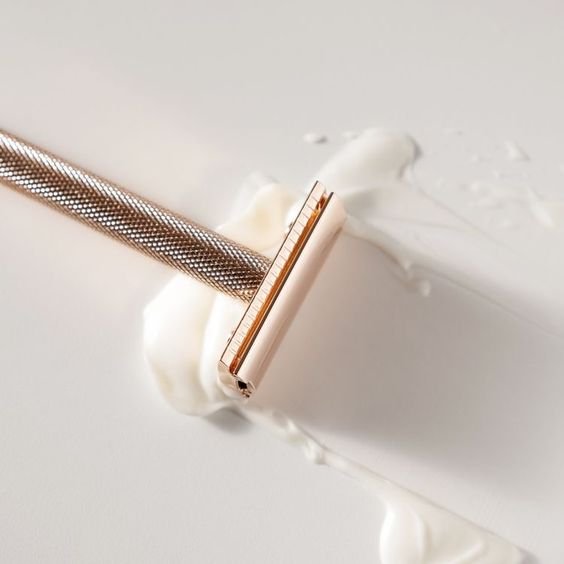Is Dermaplaning Ok For Your Skin Type?
By now, you may know what dermaplaning is, thanks to increasing popularity via social media, medspa technicians, dermatologists, or other beauty influencers. But understanding the concept and how to do it correctly can make a huge difference in the effects. While it may just look like face shaving at first glance, it’s far more than that. Here’s a breakdown on what dermaplaning does, and how to utilize it for maximum effects.
When we shave our facial hair correctly (and we don’t just mean like beard hair - we mean that soft, fuzzy layer that is on literally everyone’s face), we’re not just removing hair; we’re removing the thin layer of dead skin cells sitting atop our skin in the stratus corneum. Removing these cells promotes skin cell turnover rate, and fresh cells more easily show through; this process is a form of physical exfoliation.
And as we already know, exfoliating has many benefits for skin. This method of exfoliation, in particular, is excellent at helping skincare products penetrate more deeply and helping makeup go on smoother.
Who Should and Shouldn’t Shave Their Face?
The hair on our face grows there for a reason, as it handles the critical job of shielding our skin. It may not seem like it, but facial hair protects the skin from UV rays. Additionally, that layer of dead and dying skin cells helps our skin retain moisture and protects new skin cells from dirt and debris. So, for those who are prone to sun damage or who have sensitive skin, dermaplaning may not be the best option. People with dry skin should also tread carefully, as moisturizer and SPF are non-negotiables.
How Can I Shave My Face?
For those who want to try shaving their face (aka dermaplaning), it’s cheap, easy, and safe. You’ll need a dermaplaning razor, face wash, moisturizer, and a sink. To ensure that you don’t push dirt into any pores, wash your face thoroughly; warm water will soften the hairs and make them easier to remove. Next, dry your skin, gently pull it taut, and use short 45-degree angle strokes going downward in the direction of the hair growth.
Between every section of your face, such as the lip, chin, and forehead, rinse the blade to dislodge hair and skin cells, then move on to the next section. Once you’re finished, make sure to rinse off your face one last time, and when you’re done, you can continue the rest of your skincare routine. Remember to avoid cuts and acne when shaving to avoid irritation and inflammation.
Being informed and knowledgeable is the best way to make decisions about your body and how you care for your skin. And now that you know more about face shaving for women, you can better decide whether this form of physical exfoliation is right for you. Just remember that popular trends aren’t suitable for everyone, and there’s no shame in having hair anywhere on your body.




